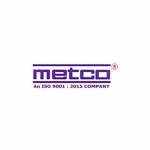Railways have always been an essential mode of transport in India, connecting distant cities, towns, and rural regions. With an ever-growing network and increasing train traffic, efficient management of trains in rail yards and stations has become crucial. One vital mechanism that supports this efficiency is the Traverser. It plays a significant role in moving trains between parallel tracks without the need for complex track layouts or time-consuming maneuvers.
A Traverser is essentially a platform or trolley that moves sideways on rails perpendicular to the main tracks. Unlike turntables, which rotate trains to align with different tracks, the Traverser slides laterally to transfer a train or railcar from one track to another. This lateral movement is especially useful in areas where space is limited, such as busy rail yards in metropolitan cities like Mumbai, Delhi, and Kolkata. By allowing smooth sideways movement, a Traverser ensures that multiple trains can be positioned efficiently without blocking other tracks, thereby reducing operational delays.
How a Traverser Works
The functioning of a Traverser is both simple and ingenious. It consists of a sturdy platform mounted on rails that run perpendicular to the main tracks. The train or railcar to be moved is rolled onto this platform. Once secured, the platform slides sideways along its rails until it aligns with the desired track. Depending on the system, the Traverser can be operated manually, using mechanical levers, or motorized, controlled by electric or hydraulic systems.
Safety is a major concern during these operations. Traverser platforms are equipped with locking mechanisms to hold the train firmly in place during lateral movement. Additionally, sensors and signalling systems in modern rail yards prevent collisions and ensure that the movement of trains is coordinated with other yard operations. This combination of engineering and safety technology makes the Traverser an indispensable tool in railway management.
Applications of a Traverser in Indian Railways
In India, rail yards often face the challenge of limited space while handling a large volume of trains. The Traverser addresses this challenge effectively. It is widely used in maintenance yards, engine sheds, and freight depots. For example, at locomotive maintenance facilities, a Traverser allows engines to be moved efficiently between repair bays without requiring long loops of track. This reduces downtime and ensures that locomotives return to service more quickly.
Freight operations also benefit from the Traverser. In goods yards, containers and wagons can be transferred between parallel loading tracks with ease. This facilitates faster loading and unloading, which is crucial for time-sensitive shipments such as perishable goods and industrial materials. By optimising the movement of trains, a Traverser contributes significantly to overall rail efficiency.
Advantages of Using a Traverser
Space Efficiency: Traverser platforms reduce the need for multiple parallel tracks or long turning loops, making them ideal for congested areas.
Time-Saving: Lateral movement of trains is quicker than maneuvering through multiple switches or loops.
Cost-Effective: Less track infrastructure is required, reducing construction and maintenance costs.
Safety: Modern Traverser systems integrate with signalling to prevent accidents and ensure smooth operations.
These benefits have made the Traverser a standard feature in many urban and industrial rail networks in India. Its ability to handle heavy railcars and locomotives efficiently makes it a reliable solution for modern railway logistics.
Leading Industrial Solutions by Metal Engineering & Treatment Co. Pvt. Ltd.
With over 60 years of expertise, Metal Engineering & Treatment Co. Pvt. Ltd. delivers high-quality engineering and material handling solutions. Their capabilities include electrically operated railway traversers, transfer cars, push bar conveyors, and specialised machinery like the Pling Rig. Equipped with advanced workshops and a skilled team, METCO excels in fabrication, assembly, and testing of heavy equipment. Known for innovation and precision, the company provides reliable, robust, and technologically advanced solutions for railways, construction, and industrial sectors across India.
Conclusion
Efficient train management is vital for India’s growing railway network, and the Traverser is a key mechanism that supports this goal. By allowing lateral movement between tracks, it optimizes space, reduces delays, and improves operational efficiency in rail yards and maintenance facilities. Whether in busy metropolitan stations or industrial freight depots, the Traverser continues to be an indispensable tool in the smooth functioning of the railway system. Understanding its role helps highlight the blend of traditional engineering and modern technology that keeps India’s trains running on time.


Write a comment ...